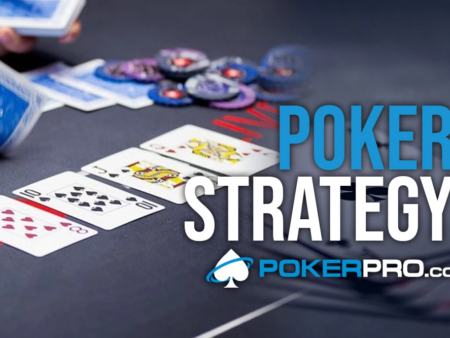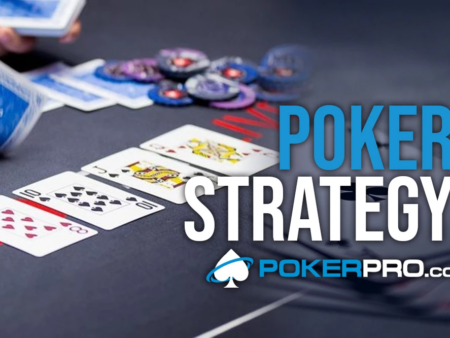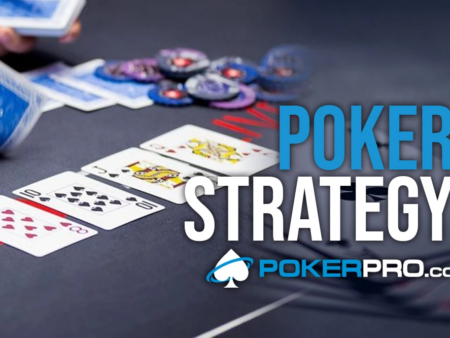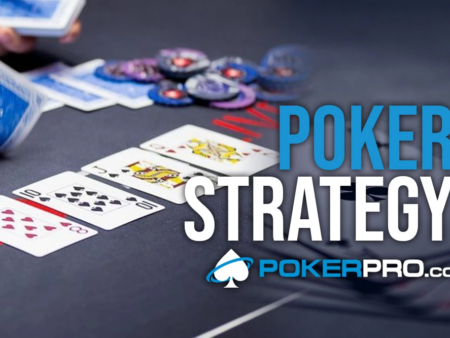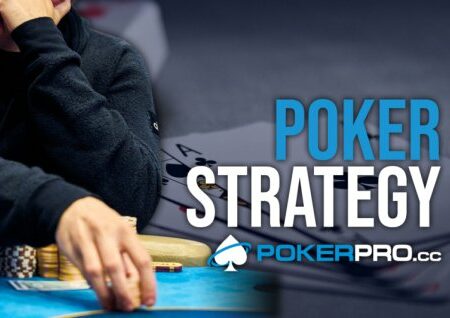Today we’re going to talk about the differences between playing in and out of position as the preflop aggressor. For all players that are just s…
Playing Out of Position (OOP) as the Preflop Aggressor

Today we’re going to talk about the differences between playing in and out of position as the preflop aggressor.
For all players that are just starting out, let’s first explain what it means to be in or out of position in poker. The term in position refers to the relative position the player is in to the button. This is important because the player closest to the button gets to act last on every post flop street and has an advantage because of it since he has more information – the player out of position has to act before him on every street, which means it’s also easier to extract value and realize his equity. OOP or Out Of Position is just the opposite to that, so when we find ourselves being further away from the button compared to our opponent.
This is why the button is the best position in poker since we are guaranteed to act last after the flop. Knowing this we should adjust our strategy so that we get to play as many pots in position. We do this by flatting and 3betting most often when we are closer to the button and also come in for a raise with a wider range of hands if everybody folds to us.
Unfortunately, we can’t guarantee ourselves to always play in position so we should look at how our strategy changes once that happens even though we aren’t going to be in such a situation most often. Two of the most frequent scenarios when we are forced to play OOP are when we defend the big blind and when our open raise gets flatted by an IP player.
We’ll look at how to play in the big blind in a separate article but today we’ll be focusing on the example where we are the preflop aggressor.
Example
To see the differences between playing IP or OOP we are going to look at a hand where our starting range looks exactly the same – we’ll be opening the CO with 50bbs, and the difference will be the relative position of our opponent
In Position (IP)
We’ll start our analysis by looking at how we should approach playing a very unconnected board as the preflop aggressor against a SB flat.
CO opens 2.5bb, BTN folds, SB calls, BB folds
(6.5bb) 9h3c2d
SB check, Hero ?
This board as most unconnected boards is better for the opener since his range is uncapped which means that he can have all the strongest hands like overpairs, sets and strong top pairs. This isn’t true for the OOP player since we can eliminate hands like 99+ and K9s from his range since he would be 3betting those hands before the flop. On this exact board the IP player or our hero has 52,5% equity in this pot which means we’ll get to bet quite aggressively.

If we look at the frequencies our hero should be playing by, we can see that he should only check around 30% of the time and once he does bet, he should mostly be using the bigger 60% pot sizing for all the reasons we mentioned earlier.
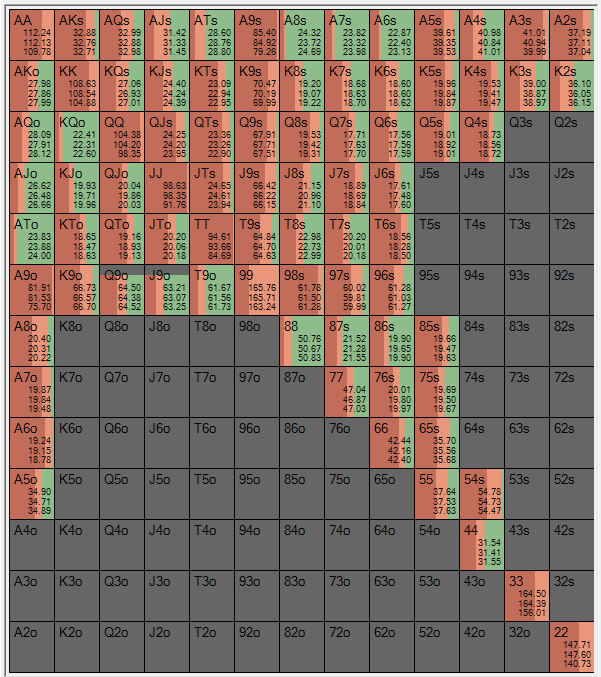
Above we can see the strategy we should be employing according to GTO. We can see that strong hands such as 22, 33 and 99 as well as overpairs and strong top pairs like A9-T9s are betting with almost 100% frequency. This is in part due to the fact that we are the IP player and don’t need to protect our checking range since our opponent cannot act after us on this street.
We can also see that since we have an equity advantage there aren’t many hands that prefer checking to betting except maybe some high card hands with bad backdoor potential like KQo, ATo and A8-A6s which really don’t want to get check raised and folded off their equity.
Since we’re betting all of our strong hands that allows us to incorporate more bluffs in our strategy as well. If we look at a hand like Qs8s which doesn’t really have much going on other then an over card and a weak back door straight draw but it still bets at almost a 100% frequency because our betting range contains enough strong hands to support all the bluffs.
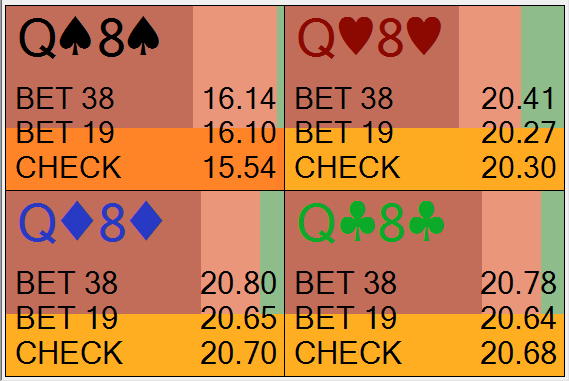
Out of Position (OOP)
Now we’re going to look at the exact same scenario as we did in the previous example except that this time the player calling our open will be the BTN and so we will have to navigate postflop OOP. Let’s see how this changes our strategy.

We can see that our checking frequency is almost 50% higher (from 30% – 44%) even though we still possess the same equity advantage we did in the previous example of 52,5%. This is because the ranges our villain should be playing in this situation are very similar to the ones in the previous example.
This trend holds true for almost all situations when comparing IP to OOP. The reason is that we can negate some of the positional advantage our opponent has over us by checking more hands to him and thus making our range more disguise.
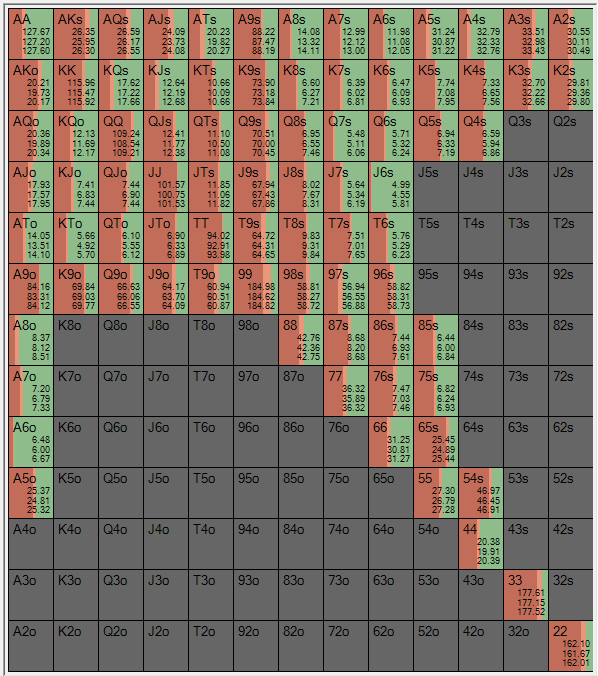
Of course, we have to be careful as to how we do that since if we would only start checking more of our weakest hands our opponent could exploit that by attacking our checks relentlessly.
This is why we can see that now we should be doing more checking with our strongest hands that don’t need a lot of protection like AA&KK, sets and even some top pairs.
Another advantage our opponent has in this situation is that he can float our flop bet. That means that he calls our flop bet with the intention of bluffing us on later streets if we give him the chance to take the betting lead. This incentivises us to also start checking more middling strength hands such as Ahigs, middling pocket pairs, and hands with two over cards like KTo.
We can see this concept in action very well if we look at the same hand with very little equity as we did in the previous example – Qs8s.

Here we can see just how important it is to have some backdoor equity since all the combos with a backdoor flush draw are betting and the spade variety is checking 100% when OOP. Having good backdoors is important to combat our opponent from floating us too much since we are going to pick up equity on the turn more often which will allow us to bet the turn as well and fold him from his weak hands that called the flop.
Conclusion
When playing OOP as the preflop aggressor we need to play less aggressive in order to disguise our hand and protect our checking range on the flop. Ideal frequencies we should be aiming for when cbetting in and out of position are quite different – 40% for OOP and 80% IP.
We need to be careful to not always bet with our strongest hands when we play OOP since we don’t want our opponent to know that once we check we can’t have any more strong hands and blow us off the pot. On the other hand since we are betting less frequently with value hands we need to cut down on our bluff combos as well and give up more hands right on the flop. The kind of hands we want to do that with are the ones with the least amount of equity and backdoor potential since those are the hands we’ll be able to bet again on the turn and river the least often.
You also need to pay attention to the board texture because since the callers range is much more condensed around the broadway and suited connector part of range there are boards like JT9 and similar where we are going to be at a disadvantage as the preflop aggressor which with the fact that we are playing OOP will lead us to check our entire range and go from there.

